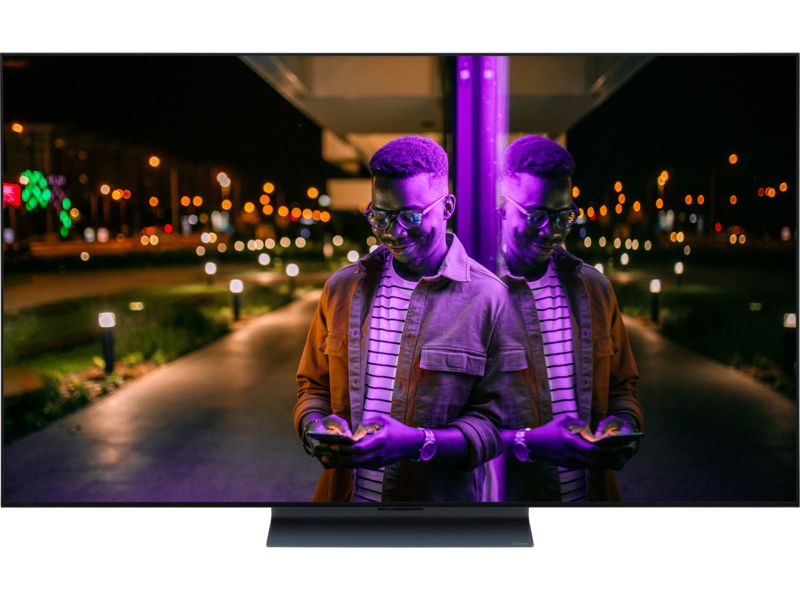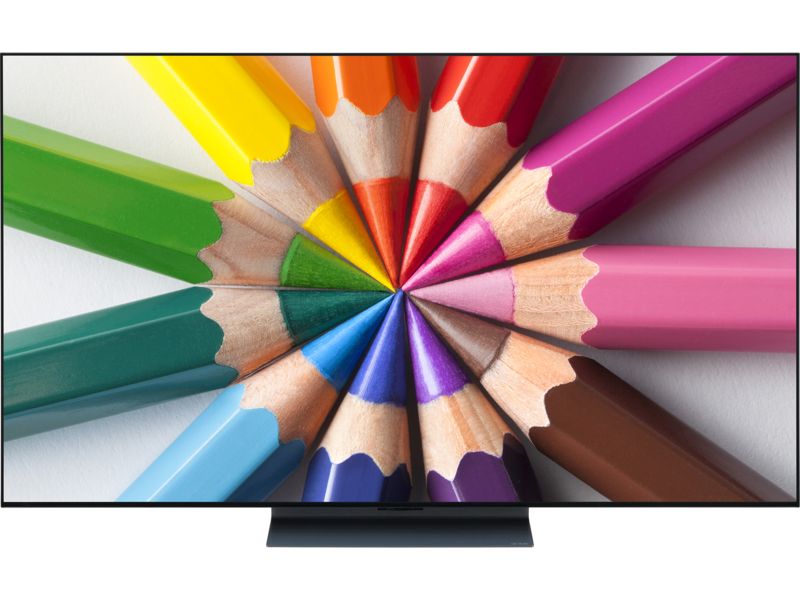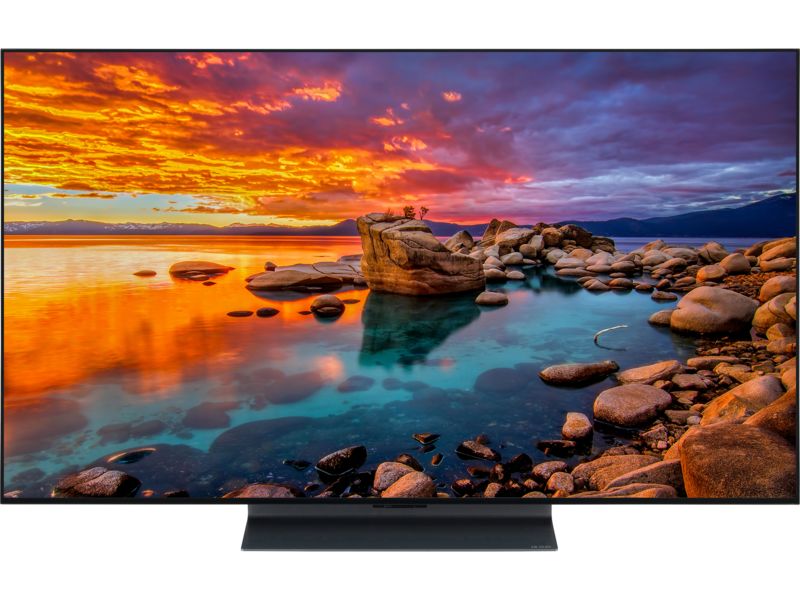By clicking a retailer link you consent to third party cookies that track your onward journey. If you make a purchase, Which? will receive an affiliate commission which supports our mission to be the UK's consumer champion.
The best TVs for gaming on PlayStation 5 and Xbox Series X

You can connect a games console to any TV with a HDMI input, but certain features – such as FreeSync, high refresh rates and variable refresh rates (VRR) – mean some TVs are better for gaming than others.
In this guide we'll explain what these gaming-focused features do, and pick out some TVs that have them, so you can choose a gaming TV that will do the best job of displaying Call of Duty, FIFA, Fortnite and more.
As well as having the right TV for gaming, you need the right size TV for your room – our choosing tool can help you to pick the perfect size
What specs should a TV have for gaming?
The high-quality graphics and fast pace of video games demand a TV that can keep up with the action. Here are some of the most important features to look out for.
FreeSync: reduces screen tear and judder for AMD graphics cards
FreeSync is a technology developed by one of the biggest graphics card producers, AMD. It's designed to reduce some of the unpleasant image issues that can occur when playing video games, such as screen tearing and judder.
Screen tearing is where the picture appears to split horizontally as if it's been cut in half, with one section moving independently from the other. It often happens while panning the camera, which is something you do loads while gaming.
Judder usually happens when the frame rate is inconsistent. If a game is supposed to be 30 frames per second, but sometimes drops to 20 when there's too much happening for the console to cope, then the game can seem to drag. FreeSync recognises this and compensates, dynamically adjusting the frame rate so the stutters are less obvious.
There are three versions of FreeSync:
- FreeSync – this version reduces screen tearing and helps with 'latency' (also known as input lag), so the TV will respond more quickly to button presses on the controller.
- FreeSync Premium – same as FreeSync, but adds support for 120Hz displays.
- FreeSync Premium Pro – same as FreeSync Premium, but adds extra features that help the TV process the HDR data more quickly, which will minimise input lag when playing games in HDR.
You can find a list of all the TVs that support each version of the technology on the FreeSync website.

G-Sync: Nvidia's answer to AMD's FreeSync
There are two big names for graphics cards and graphics technology. Where AMD has FreeSync, its rival Nvidia has G-Sync.
Both FreeSync and G-Sync do broadly the same thing: reduce input lag and screen tearing, and help to maintain a stable frame rate.
HDMI 2.1: improved connectivity for key gaming features
Even TV connections get updates, and version 2.1 for HMDI is important for gaming.
It's all about compatibility with other features, such as high refresh rates and variable refresh rates – more on those later. If you connect a games console to an older version of HDMI, you'll still be able to see the game you're playing but you won't be benefiting from those extra features.
Sometimes all the HDMI ports on a TV are 2.1 and sometimes it will just be a few of them. They aren't always labelled, so check the manual to see which is 2.1 and connect your games console to the right one.

High refresh rates: the higher the rate, the smoother the image
Frame rate, usually expressed as frames per second (fps), is a big deal for gamers. It's basically how many times the screen refreshes every second, measured in Hz. The more times the screen refreshes the picture, the smoother it will look.
Games tend to be either 30 or 60fps on consoles (PC games can be pushed well into the hundreds) but the PlayStation 5 and Xbox Series X/S have some games that go up to 120fps. To see those games in all their smooth glory, you need a 120Hz TV.
Some TVs have 120Hz panels, but will restrict the resolution if you want to play at this frame rate. Some will cap the resolution at Full HD, while others support 120Hz at 4K.
8K content is capped at 60Hz regardless of what TV or console you have as it's a limitation of HDMI 2.1. Yet another reason why you shouldn't buy one yet: find out more about 8K TVs.
Variable refresh rates (VRR): boosts the frame rate when it's needed most
Maintaining a smooth frame rate is vital for enjoyable gaming. Imagine watching a film where every few seconds the action stutters and stalls like stop-motion animation. It's the difference between watching a modern CGI monster and Ray Harryhausen's slightly less realistic mythical beasts in Jason and the Argonauts.
A constant back and forth between different frame rates creates this kind of judder, and it's not uncommon. As the action in a game heats up and the console is burdened with displaying multiple effects and complex enemy AI, it can struggle to keep up and frame rate is usually the first casualty.
VRR sees this coming and compensates by copying frames to fill in the gaps the console can't process in time. VRR is something that is included with FreeSync and G-Sync, so isn't always mentioned separately on TV spec sheets or website listings.

Is it worth buying a TV with a dedicated games mode?
With gaming being such big business, many TV manufacturers have introduced gaming modes to their TVs. This is usually in addition to movie and sport modes – it's a quick way of adjusting several settings at once to get the best picture for a specific type of content.
For gaming this can mean any number of things. Game mode on TVs might, for example, adjust settings to reduce input lag, so the TV reacts more quickly to button presses on the controller. Or they might adjust contrast to emphasise details in darker areas, so you can more easily see enemies and items to pick up.
Some TVs automatically shift to game mode as soon as they recognise a signal from a games console; others will need you to change it manually.
As with all picture settings, you should tinker and adjust them so the look of your favourite games works best for your requirements. Don't assume that whatever the manufacturer thinks looks best is necessarily best for you.
Do you need all these gaming features?
The good news is that VRR, FreeSync and the rest aren't essential. If you buy a TV with good picture and sound then your games will look and sound good. The majority of these features are aimed at helping games look smoother or play at higher frame rates. They are nice to haves rather than must haves.
It's like any high-end feature, they are never the be-all and end-all. Having G-Sync is nice, but it won't rescue a gaming experience if the TV has poor picture quality. The core principles that we base our test on will always be key no matter what you're doing on your TV, so don't think your beautiful 4K PlayStation 5 titles will look like a polygonal a PlayStation 1 slideshow if you don't fork out for a high-end TV.
If you're after a new console this holiday season, be sure to keep an eye on our pages on the best Xbox Black Friday deals, the top PlayStation discounts, and the best Nintendo Switch bargains.
Is an OLED or LED TV better for gaming
Broadly speaking, it doesn't matter as long as you buy a good TV. It's better to choose a TV that has a range of gaming features to make the most of your console or PC, but FreeSync, a high refresh rate and VRR won't make a game look good if the TV has poor picture and sound quality.
Although the nature of OLED displays means they tend to have better contrast and motion control than backlit TVs, there are still plenty of LCD, LED and QLED TVs that will show your favourite games off to their fullest.
Don't feel like you need to choose an OLED.
Top TVs for gaming
We've picked out a handful of TVs that have the right features to make them a great gaming option – on paper, at least. Use the links to head to the full reviews for each one to see if the sound and picture quality make them good all-rounders.
These models were released in 2022, but are still available. They have the same gaming features as 2023 TVs, but are far cheaper, so don't worry about choosing the latest model while these are still available.
LG OLED48C34LA (£949)

- FreeSync compatible: Yes
- G-Sync compatible: Yes
- HDMI 2.1 inputs: Four
- 120Hz screen: Yes
- VRR: Yes
- 4K at 120Hz: Yes
The 48-inch OLED55C24LA ticks all the boxes for gaming. It supports advanced HDR formats, too, including Dolby Vision IQ, which can adjust contrast based on the brightness of the room.
You could also consider the cheaper LG OLED55B36LA which has the same technology built in, but only two of its four HDMI inputs are 2.1.
Reviews of all TVs we've tested in LG's C2 series:
- 42-inch LG OLED42C34LA review
- 48-inch LG OLED48C34LA review
- 55-inch LG OLED55C34LA review
- 65-inch LG OLED65C34LA review
Below, you can check pricing and availability for each model in the C2 series:
Samsung QE55QN85B (£749)

- FreeSync compatible: Yes
- G-Sync compatible: Yes
- HDMI 2.1 inputs: Four
- 120Hz screen: Yes
- VRR: Yes
- 4K at 120Hz: Yes
Samsung's Neo QLED TVs have some interesting features to attract gamers. The QN85B range has an ultrawide gaming view which narrows the picture vertically, but gives you way more width, so you can see more of the world around you. It's good for first-person shooters, where seeing more of you surroundings helps you spot enemies sneaking up on you.
You get the gamut of top-tier features for gamers, too. Spec wise the only difference between this and the OLED55C24LA (in gaming terms) is the HDR formats supported. Rather than Dolby Vision you get HDR10+ instead.
Reviews of both TVs we've tested in Samsung's QN85B series:
Below, you can check pricing and availability for each model in the QN85B series:



